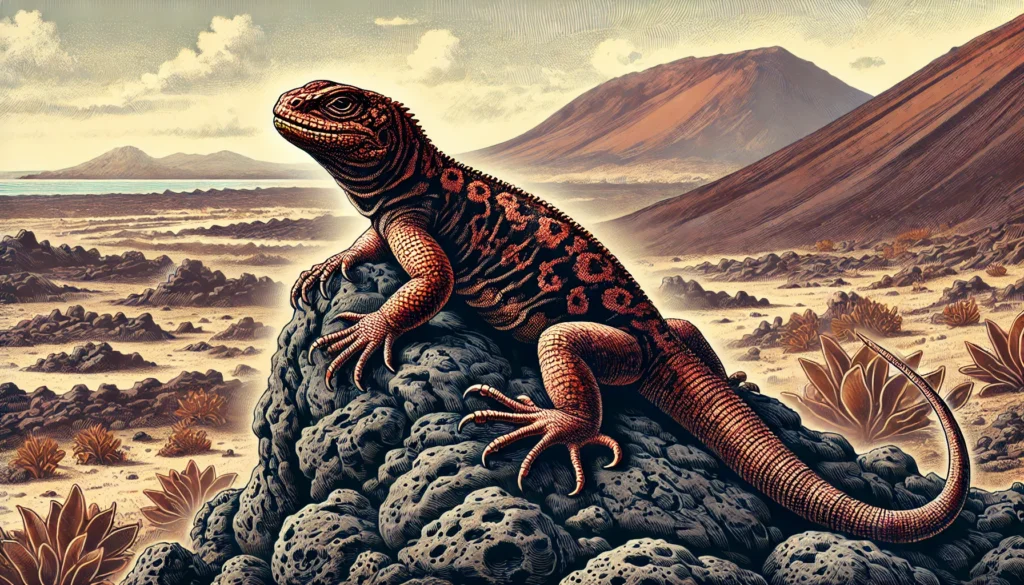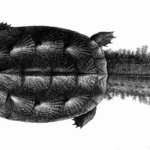The Galapagos Lava Lizard is one of the most iconic reptiles found on the Galapagos Islands. These small but tough creatures have adapted to life on the harsh volcanic terrain of the islands, where they thrive under extreme environmental conditions. While they may seem unassuming, Galapagos lava lizards play a vital role in the island ecosystems and have evolved unique behaviors and traits to survive in this isolated habitat.
In this article, we will explore six fascinating facts about the Galapagos Lava Lizard and learn more about the important role they play in the fragile ecosystem of the Galapagos.
1. Lava Lizards Are Endemic to the Galapagos
One of the most important facts about lava lizards is that they are endemic to the Galapagos Islands, meaning they are found nowhere else in the world. The Galapagos archipelago, located about 600 miles off the coast of Ecuador, is home to seven species of lava lizards, each of which has adapted to the specific conditions of its island habitat.
Different Species on Different Islands
While some species of Galapagos lava lizards are found on multiple islands, others are restricted to specific islands. For example, the San Cristobal Lava Lizard (Microlophus bivittatus) is found only on San Cristobal Island, while the Western Lava Lizard (Microlophus albemarlensis) is distributed across several western islands, including Isabela and Fernandina.
The isolation of the islands has led to subtle differences in the appearance, behavior, and adaptations of these species, making them a prime example of how geographic isolation can drive speciation.
2. Master of Camouflage: Blending with the Lava Rock
As their name suggests, lava lizards have adapted to life on the volcanic rock formations that dominate the Galapagos landscape. Their coloration plays a crucial role in their survival, as it helps them blend into their surroundings and avoid predators. Lava lizards typically have a mottled pattern of browns, grays, and yellows, which allows them to remain nearly invisible while basking on the sun-baked lava rocks.
Color Change for Protection and Communication
Interestingly, Galapagos lava lizards are also capable of changing color in response to their environment or social situations. When they feel threatened, they can darken their skin to blend more effectively into the shadows of the rocks. In contrast, males often brighten their colors during displays of dominance or territorial fights, signaling their strength and status to rivals.
This ability to change color serves both as camouflage and as a form of communication, helping them navigate their volcanic home and interact with other lizards.
3. Males and Females Have Distinct Appearances
In Galapagos lava lizards, sexual dimorphism is pronounced, meaning males and females have different physical characteristics. Male lava lizards are typically larger, with more robust bodies and brighter, more vibrant coloring than females. Males also have distinctively spiked dorsal crests, which they use in territorial displays to ward off other males.
Female Lava Lizards
Female lava lizards are smaller and have more muted colors, but they are easily recognizable by the reddish-orange patch on their throats, which becomes more pronounced during the breeding season. This coloration helps males identify potential mates and also signals the female’s reproductive readiness.
Both males and females use their appearance to communicate, whether it’s males asserting dominance or females signaling mating readiness.
4. Push-Up Displays: Communication and Dominance
One of the most fascinating behaviors of Galapagos lava lizards is their unique push-up displays, which are used for communication and to establish dominance. Both males and females perform push-ups as a way to signal their presence, but the behavior is particularly common among males during territorial disputes.
How Push-Ups Work
Male lava lizards use push-up displays to signal their strength and to warn rivals to stay away from their territory. These rapid push-up movements can be accompanied by head-bobbing and tail-flicking to emphasize the display. The bigger and stronger the lizard, the more exaggerated and frequent the push-ups.
This visual display is a non-violent way to resolve territorial disputes, as weaker males will often back down after witnessing the push-up display of a stronger rival. The displays also help lava lizards conserve energy by avoiding direct physical confrontation.
5. Important Role in the Ecosystem
Despite their small size, Galapagos lava lizards play an important role in the island ecosystems. As insectivores, they help control insect populations, feeding on a wide variety of invertebrates such as flies, beetles, spiders, and even mosquitoes. By keeping insect populations in check, they help maintain a balanced ecosystem.
Scavengers and Opportunistic Feeders
Lava lizards are also opportunistic feeders, occasionally scavenging on dead animals or eating plant material like fruits and flowers. Their flexible diet allows them to survive in the harsh conditions of the Galapagos, where food sources can be limited due to the extreme climate and arid volcanic landscape.
This adaptability makes lava lizards a key species in the Galapagos food web, helping maintain balance between prey and predator populations.
6. Heat-Adapted Survivors: Thriving in Harsh Conditions
The volcanic landscape of the Galapagos Islands can be an incredibly harsh environment, with scorching heat, barren terrain, and little water. Despite these challenges, lava lizards are heat-adapted and have developed behavioral strategies to survive in this extreme climate.
Basking and Thermoregulation
Lava lizards are ectothermic, meaning they rely on external sources of heat to regulate their body temperature. During the early morning hours, they bask on the warm lava rocks to raise their body temperature, allowing them to become active. When the midday sun becomes too intense, lava lizards retreat into the shade of rocks or vegetation to avoid overheating.
This daily cycle of basking and seeking shade allows lava lizards to maintain an optimal body temperature while conserving water and energy.
Conclusion
The Galapagos Lava Lizard is a remarkable example of adaptation and survival in one of the most extreme environments on Earth. With their masterful camouflage, unique push-up displays, and ability to thrive in the heat of the Galapagos, these lizards are a vital part of the islands’ fragile ecosystems. As we continue to study them, they provide valuable insights into the effects of isolation, environmental pressures, and evolution on species.
FAQs
How many species of lava lizards are there in the Galapagos?
There are seven species of lava lizards found in the Galapagos Islands, each of which has adapted to the specific environment of its island.
What do Galapagos lava lizards eat?
Galapagos lava lizards primarily eat insects such as flies, beetles, and spiders, but they are also known to consume plant material, fruits, and flowers when available.
Why do lava lizards perform push-ups?
Lava lizards perform push-ups as a form of communication and to establish territorial dominance. Males often use push-ups to signal their strength and ward off rivals.
How do lava lizards survive the heat of the Galapagos Islands?
Lava lizards are heat-adapted and manage the extreme temperatures by basking on warm rocks in the morning and retreating to the shade during the hottest parts of the day.
Are lava lizards endangered?
Lava lizards are not currently endangered, but like many species in the Galapagos, they are vulnerable to changes in their environment and the introduction of invasive species. Conservation efforts in the Galapagos aim to protect these unique reptiles and their habitats.


